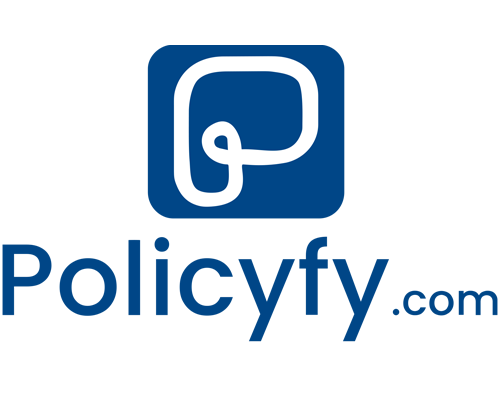Car insurance
Car insurance
Car insurance is more than just a legal requirement — it's a smart financial safety net that protects you, your vehicle, and others on the road. In today’s fast-moving world where accidents and uncertainties are a part of life, having the right car insurance ensures peace of mind and financial protection. Whether you're a new driver or an experienced car owner, understanding how car insurance works and choosing the right policy is crucial.
🚗 Car Insurance
Instant Car Insurance – Affordable & Paperless
Secure your car with Policyfy. Compare plans, get coverage for theft, accident & more, with 24x7 claim support and zero paperwork.
👉 Tap to Insure Your Car NowWhat is Car Insurance?
Car insurance is a contract between you and an insurance company that protects you against financial loss in the event of an accident, theft, or damage to your vehicle. In exchange for a premium, the insurer agrees to cover your losses as outlined in your policy.
In India, car insurance is mandatory under the Motor Vehicles Act, 1988. Driving without insurance can lead to heavy fines and legal consequences.
Types of Car Insurance in India
Understanding the different types of car insurance will help you choose the right coverage for your needs.
- Mandatory by law
- Covers liability for injury/death of a third party and damage to third-party property
- Does not cover your own vehicle damage
1. Third-Party Insurance
- Offers complete protection: third-party + own damage cover
- Covers accidents, theft, fire, natural disasters, riots, etc.
- Optional but highly recommended for complete safety
2. Comprehensive Insurance
- Covers only damage to your own car
- Can be purchased if you already have a third-party policy
- Ideal for people with older cars or limited use
3. Standalone Own Damage Insurance
Why Car Insurance is Important
- It is a punishable offense to drive without valid third-party insurance. Being insured ensures you're on the right side of the law.
✅ Legal Compliance
- Accidents can lead to expensive repairs or even lawsuits. Insurance protects you from paying these costs out of pocket.
✅ Financial Protection
- In case of injuries, some policies help cover hospitalization or treatment expenses for you and your passengers.
✅ Covers Medical Expenses
- With car insurance, you can drive confidently knowing you're protected from unforeseen events.
✅ Peace of Mind
What Does Car Insurance Cover?
-
Depending on the type of policy, coverage may include:
Accidental damage to your vehicle
Third-party liabilities
Theft of the vehicle
Fire or explosion
Natural calamities like floods, earthquakes, or storms
Man-made incidents like vandalism, riots, or terrorism
Towing charges (depending on the insurer)
What’s Not Covered? (Exclusions)
-
Always read the fine print. Some common exclusions include:
Driving without a valid license
Drunk driving
Electrical/mechanical breakdowns
Damage due to negligence
Using the car for illegal purposes or racing
Normal wear and tear
Add-On Covers for Enhanced Protection
You can customize your policy with optional add-ons for additional benefits:
-
🔧 Zero Depreciation Cover
Covers the full value of replaced car parts without depreciation deduction.
🆘 Roadside Assistance
Help during a breakdown — fuel delivery, towing, flat tyre repair, etc.
🪪 Engine Protection Cover
Covers repair costs of engine damage due to waterlogging or oil leakage.
🧑🔧 Consumables Cover
Covers the cost of consumables like nuts, bolts, oil, filters, etc.
💺 Passenger Cover
Provides personal accident coverage for passengers in your vehicle.
How Car Insurance Premium is Calculated
Premium depends on several factors such as:
-
Car’s make, model, and variant
Fuel type (petrol/diesel/electric)
Cubic capacity of the engine
Age of the car
City of registration
Type of policy (third-party or comprehensive)
No Claim Bonus (NCB)
What is No Claim Bonus (NCB)?
If you don't make a claim in a policy year, you get a discount on your next premium. This can go up to 50% for 5 claim-free years. It's transferable even when you change your car or insurer.
-
How to Buy the Right Car Insurance Policy
Here are a few steps to follow:
1. Assess Your Needs: New or expensive cars should ideally have comprehensive coverage.
2. Compare Policies: Use platforms like Policyfy to compare features, premiums, and add-ons.
3. Check the Claim Settlement Ratio: Higher the ratio, better the insurer’s reliability.
4. Read the Fine Print: Know your inclusions, exclusions, and terms carefully.
5. Choose the Right Add-ons: Depending on your car usage and location.
-
How to File a Car Insurance Claim
Follow these general steps:
1. Inform Your Insurer Immediately after an accident or theft.
2. Lodge an FIR in case of theft or major accidents.
3. Submit Documents like a copy of the RC, driving license, policy copy, FIR, etc.
4. Get the Car Inspected by a surveyor from the insurer.
5. Repair at Network Garage for cashless claims or claim reimbursement post-repair.
Digital Car Insurance: A Smart Move
-
With platforms like Policyfy, you can:
Buy or renew policies instantly
Get expert advice
Compare plans from top insurers
Avail cashless claims in partnered garages
It’s fast, transparent, and fully paperless.
-
Tips to Save Money on Car Insurance:
Avoid small claims to retain your NCB
Compare quotes online before renewing
Install anti-theft devices for discounts
Opt for voluntary deductibles
Choose long-term policies to avoid frequent renewals
Conclusion
Car insurance is not just a legal formality — it's a vital tool for financial security. Whether it’s your daily commute or a long drive with family, accidents can happen anytime. A comprehensive car insurance policy ensures that you're not left with a huge financial burden.
At Policyfy, we help you make smart insurance decisions. Whether you’re buying your first policy or renewing your existing one, our platform ensures you get the best value with the least hassle.
🔗 Ready to Insure Your Car?
👉 Visit Policyfy.com today to compare plans, choose the best policy, and drive worry-free.>






